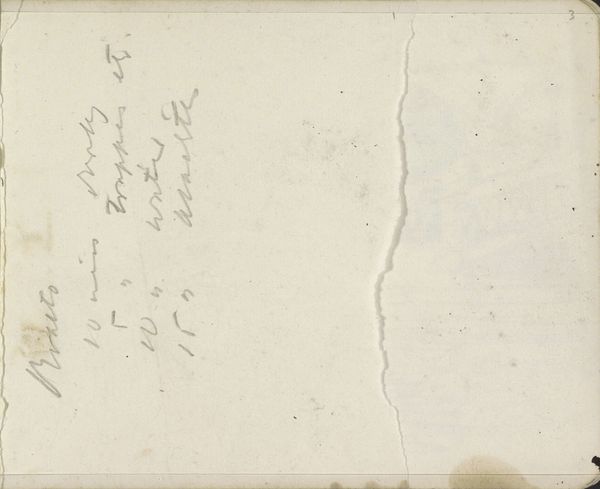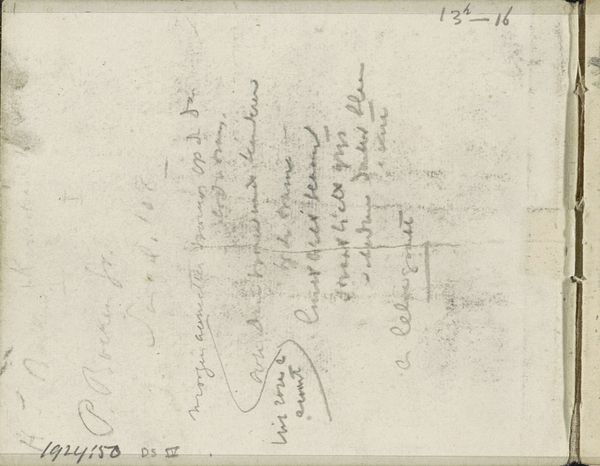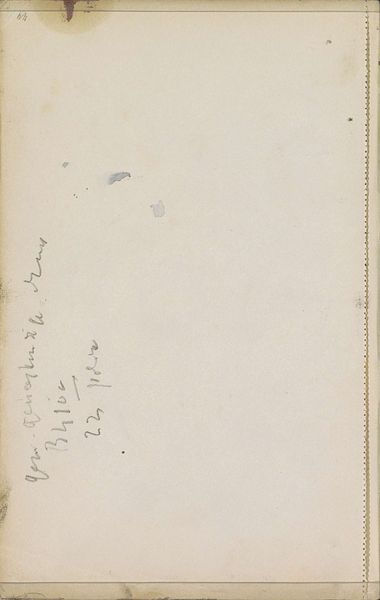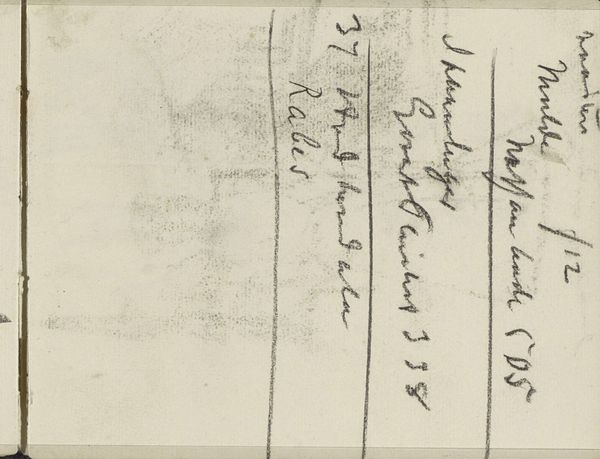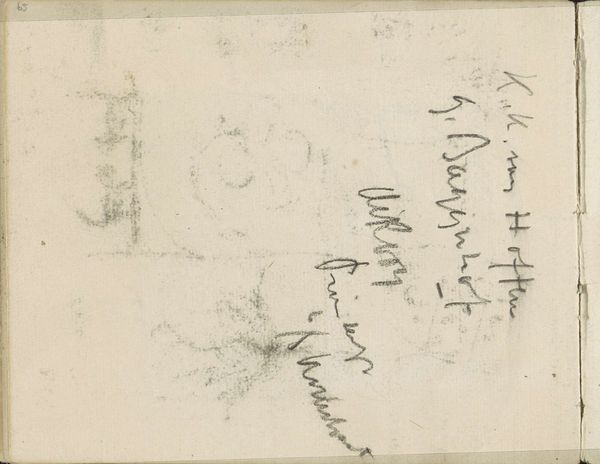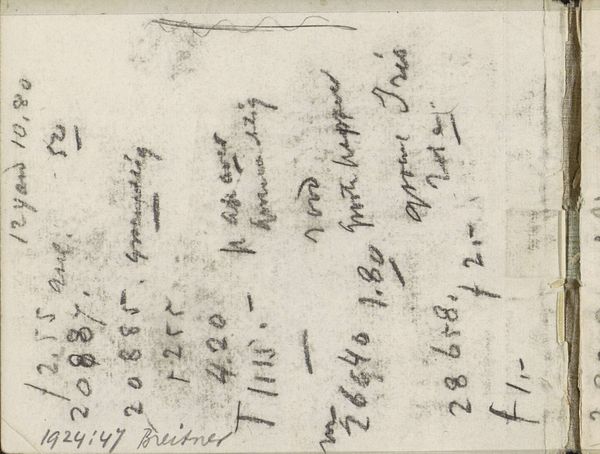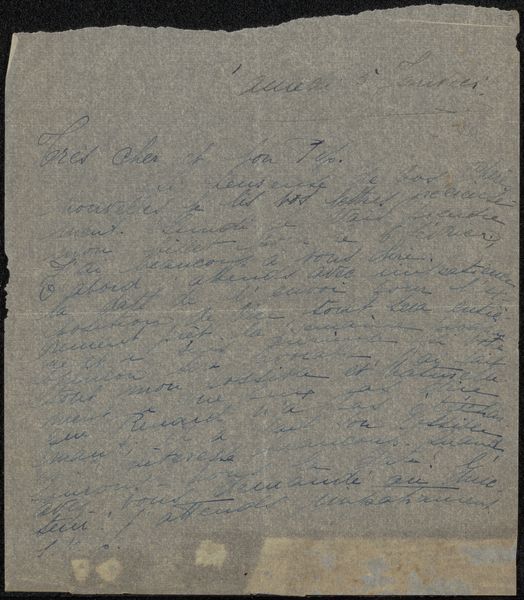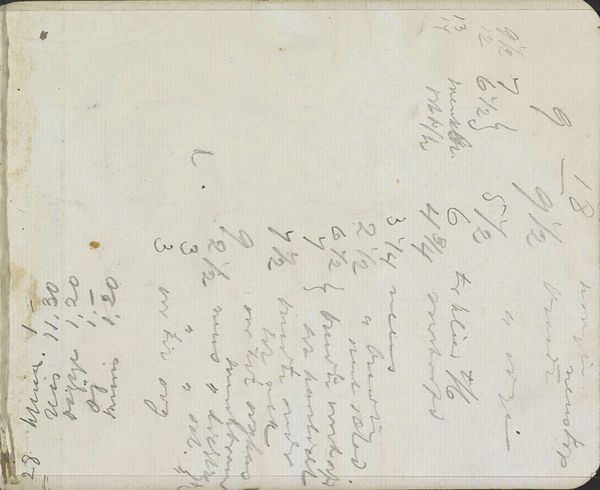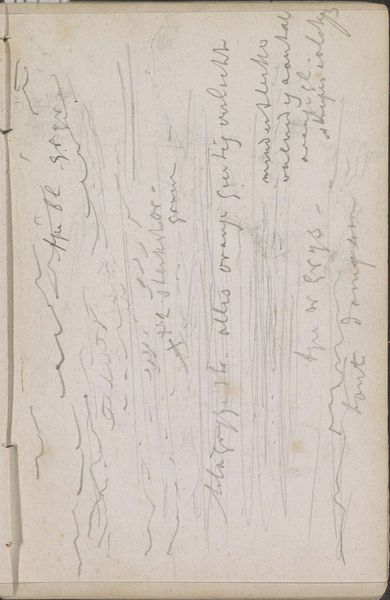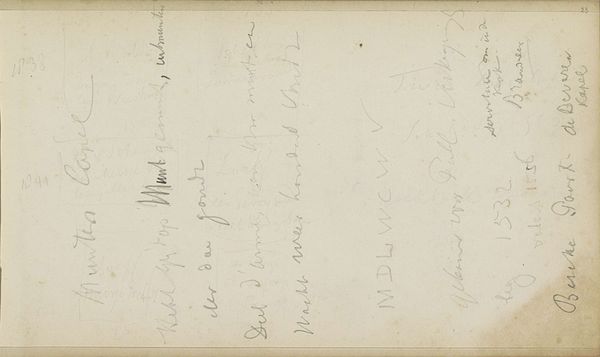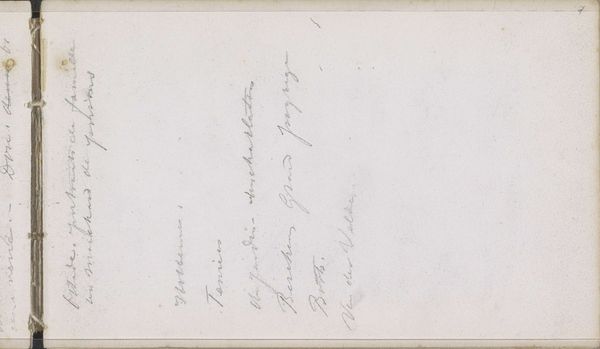
drawing, paper, ink
#
drawing
#
aged paper
#
toned paper
#
ink paper printed
#
hand drawn type
#
paper
#
personal sketchbook
#
ink
#
hand-drawn typeface
#
fading type
#
ink colored
#
symbolism
#
sketchbook drawing
#
sketchbook art
Copyright: Rijks Museum: Open Domain
Editor: This is Willem Witsen's "Annotaties" from 1914, made with ink on paper and held at the Rijksmuseum. It's a fascinating little sketchbook page. The aging of the paper, combined with the handwritten script, evokes a sense of intimacy. How would you interpret the material aspects of this work? Curator: From a materialist perspective, I'm interested in the sketchbook itself as a site of production. Consider the type of paper used. Was it readily available or a more specialized material? How would the availability and cost of these materials at the time impact Witsen’s process, and the kind of notations he chose to make? It’s not simply a matter of aesthetics, but a record of labor, resources and social circumstance, isn't it? Editor: That's a good point. It makes you consider the book as almost a kind of "raw material" rather than solely a vehicle for artistic expression. It’s interesting to think about the labour involved too. Curator: Exactly! And how the inherent qualities of the ink impacted Witsen's script; did it bleed, feather or dry quickly? Consider the social status tied to literacy at the time, reflected in the meticulous handwriting versus perhaps quick, rougher note-taking of a manual laborer. It speaks to a certain level of education and privilege, shaping the context in which we receive it. Editor: So it's not just about *what* he wrote, but *how* and *with what*, really digging into the act of creation itself as a reflection of broader societal factors. Curator: Precisely. We challenge that conventional notion of separating "high art" from mundane activities, showing how production intertwines everything, influencing both its form and interpretation. This allows for considering socio-historical connections evident even on the simplest of surfaces like a sketchbook page. Editor: I see now how exploring the materials expands understanding the piece beyond just the symbolic. Thanks! Curator: My pleasure. Examining the material conditions of art production brings the world closer to us, demystifying notions surrounding artistic creation.
Comments
No comments
Be the first to comment and join the conversation on the ultimate creative platform.

